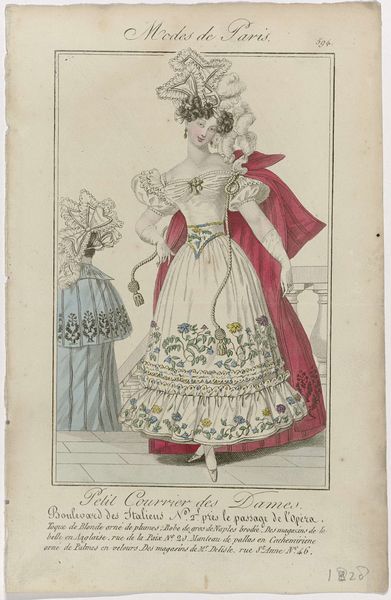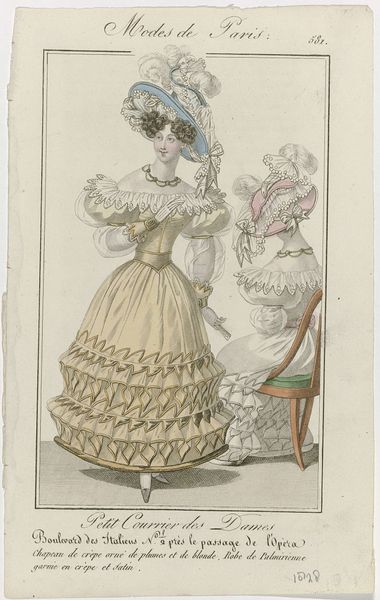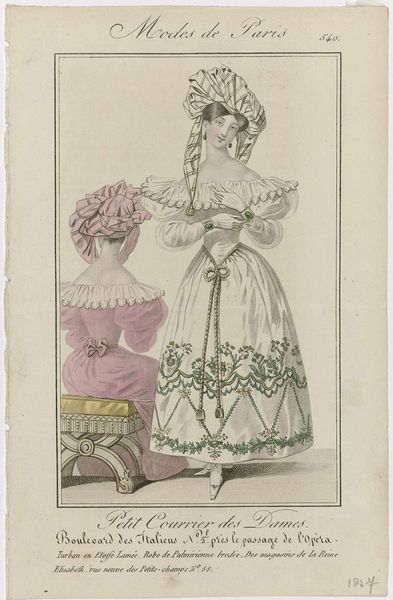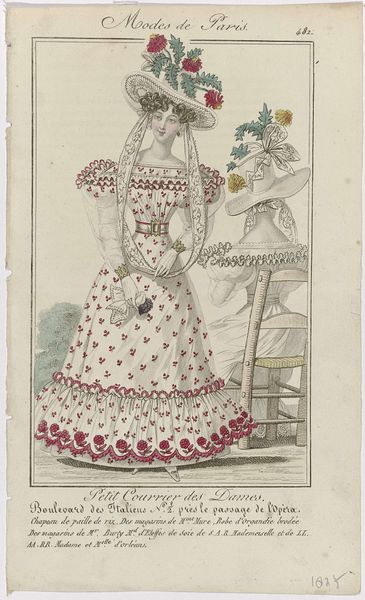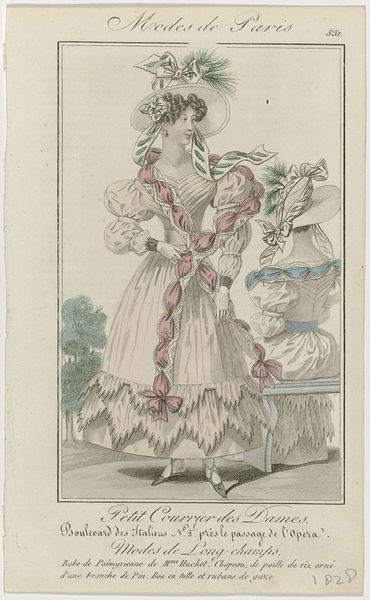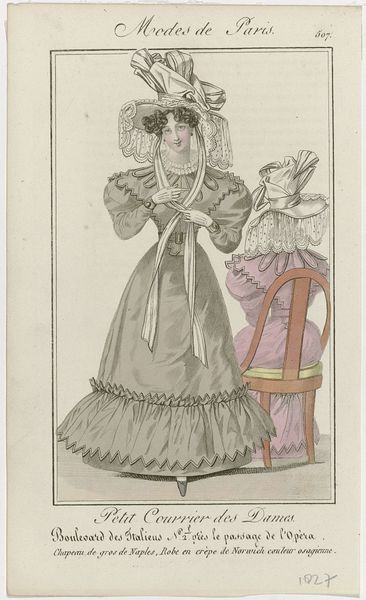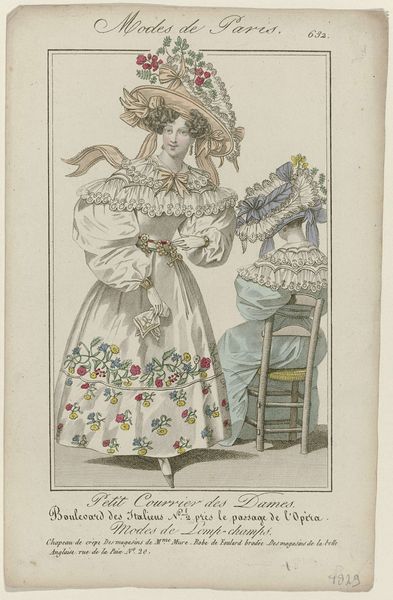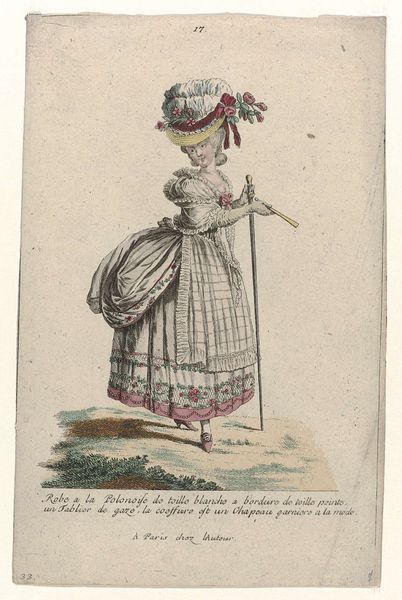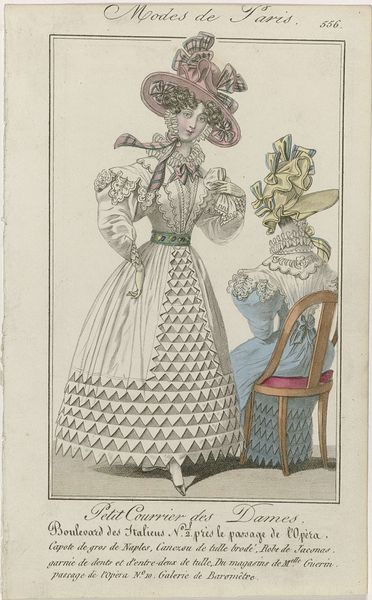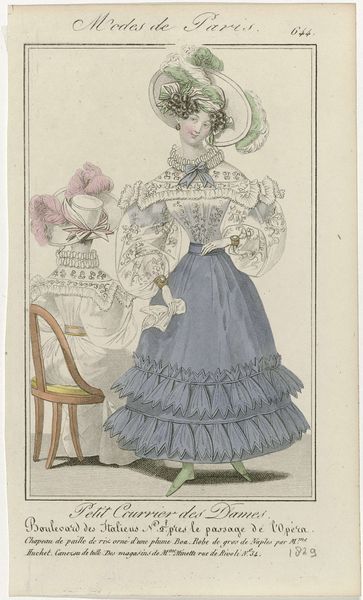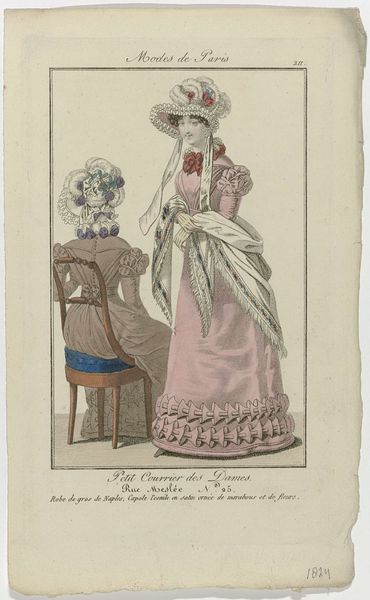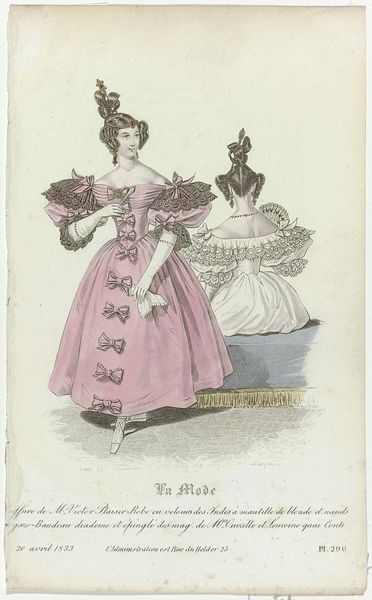
Dimensions: height 211 mm, width 130 mm
Copyright: Rijks Museum: Open Domain
Editor: So, here we have an image titled "Petit Courrier des Dames, 1828, No. 589 : Robe de Cotepali Brodé (...)" created around 1828. It appears to be a print with watercolor, showcasing women's fashion. What strikes me is how detailed and delicate it is. What do you see in this piece, especially considering its historical context? Curator: Well, it's tempting to view this image simply as a fashion plate. But let’s consider the 'Petit Courrier des Dames’ as more than a reflection of surface appearances. Consider its role as a document, a historical record reflecting a very specific moment in the construction and consumption of femininity. It showcases how women in the upper classes negotiated their identities within a society rigidly defined by class and gender. The print itself was a commodity, a means of disseminating ideals, setting aspirations and solidifying power structures of that era. Look closely – what can be deduced from the female subjects depicted? Editor: I suppose the details hint at luxury and a certain lifestyle afforded to specific demographics. The dress, bonnet, the very 'Modes de Paris' tagline – these speak volumes about the social currency associated with fashion. Do you believe this image served to exclude more than include? Curator: Exactly. Images like this weren't neutral; they actively participated in creating boundaries. Who could afford these garments? Who had access to these publications? Consider the limited circulation and the skills required to interpret the illustrations. This image reinforces a hierarchy, suggesting only some had access to the levers of culture and fashion. So, in essence, the print served to elevate and distinguish. This raises important questions about the intersectionality between wealth, class, and gender during this period and in our time. Editor: That’s really made me rethink how I approach historical images like this. It is no longer just about the clothes, but what the clothes symbolize and who has access to it, revealing deeper socio-political structures. Curator: Precisely! It invites a critical evaluation of how we, even now, consume and are influenced by similar depictions of fashion and lifestyle. The “ideal” can be a powerful form of coercion and cultural control.
Comments
No comments
Be the first to comment and join the conversation on the ultimate creative platform.


